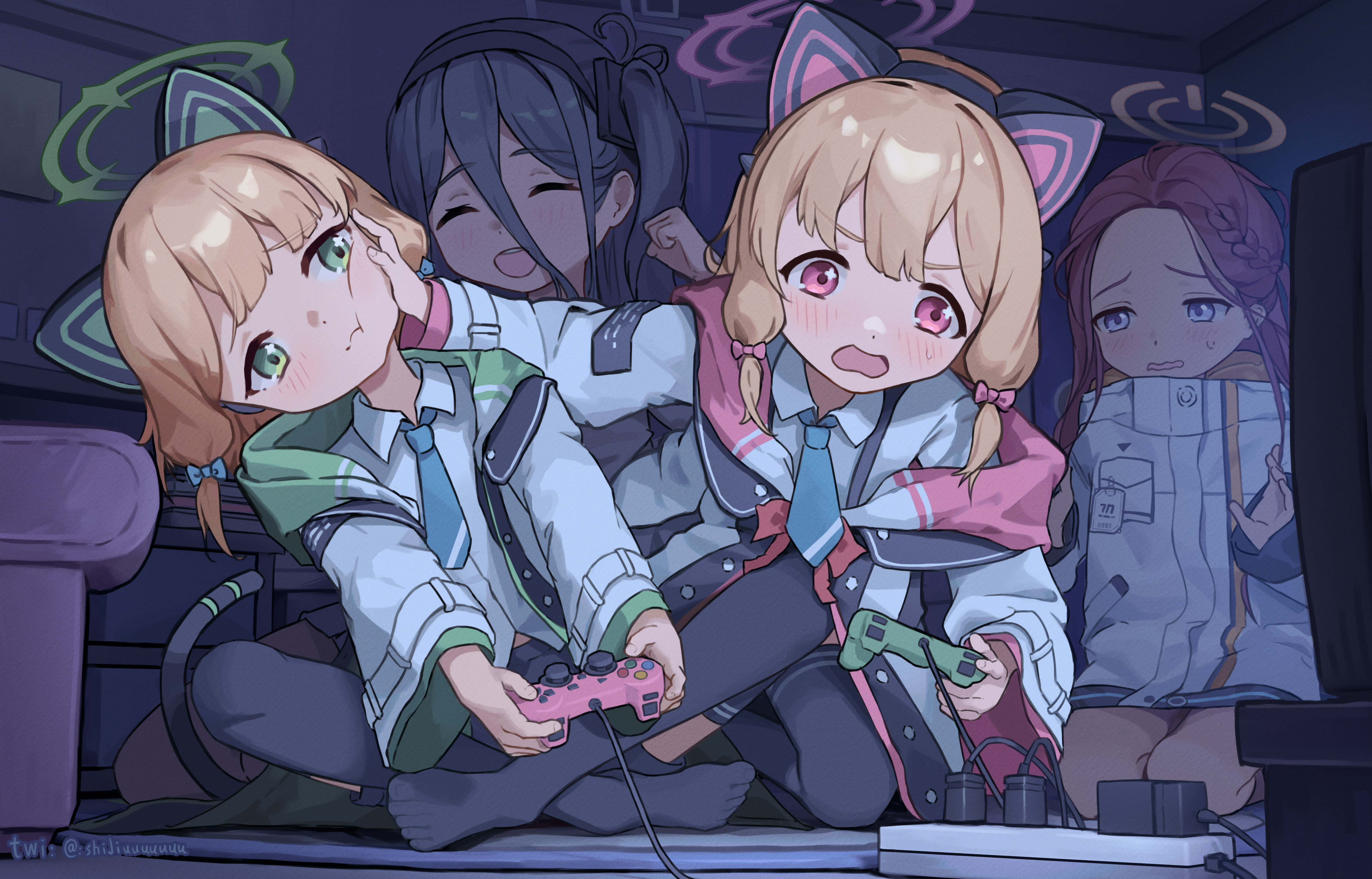
The main male protagonist.
Today’s post is my review for yet another sport anime, titled Over Drive. Actually when I downloaded this anime, I expects a mecha anime or something like that. This is a 2007 anime, which will then compete with Nodame Cantabile for the ‘Anime of the Year 2007’ title. With the sport genre handicap, can this anime do what countless other 2007 titles has failed to do and dislodge Nodame Cantabile off its perch?

The main male protagonist with his woman.
Story:-
A dorky yet overdramatic high-schooler enrolls into his school’s cycling club despite not knowing how to ride a bicycle, and in the end, he becomes a Tour de France winner. This anime shows what happened in-between, and that’s about it.
This anime starts slowly before the pace picks up when the tournament arc of this anime started. In fact, this anime only gets going at that part. The story itself is dull before the tournament but the quality becomes better as the plot developed far more quickly during the tournament compared to the first 10 episodes that precedes the tournament arc. Just like Saki, this anime uses flashbacks to manage the flow of the story and also do character development, but usage of this plot device is not as flawless as the ones in Saki. For example, flashbacks in episode 13 and 20 disrupts the pacing and the story’s flow, but the ones in episode 14 and 19 (I believe) are done very well. The absence of the exaggerations found in Saki also helps this anime immensely.
Character development is definitely the major positive point of this anime. Some factors conveniently shore up character developments in this anime, like the fact that bicycle road race is one of the most physically demanding sport in the world, plus the fact that at the start of the anime the main male protagonist is a weakling that cannot even do PE classes well. With this situation in place at the start of the anime, the viewers will be able to see the rapid transformation from a completely untalented normal high-schooler to a promising bicycle road racer in Japan, using the commonly seen ‘protagonist become better in his/her sport by sheer hard work, unbreakable spirit and unwillingness to give up’ plot; common in this genre. This alone is an incentive for any fans of Japan’s sport-genre anime to put this title in their watch-list. In this regard, this anime is not too far behind Capeta.
The ending of this anime is not only written very well, but was also presented flawlessly. Having one whole episode to tie up every loose ends is a masterstroke by the director. Unfortunately, there is no second season for this anime though.

The main male protagonist dropping his pants in front of his woman.
Character Design:-
Character designs in this anime is decent enough, especially designs for female characters. In this anime’s version of Japan, brown-haired people vastly outnumbers those with black hairs.
Voice Acting:-
Voice acting in this anime is generally good, with outstanding gigs from the main male protagonist himself and his blonde club’s captain.
Music:-
All OP/ED themes in this anime are good especially the 2nd ED theme. The same thing can also be said for the OST. Definitely a positive point for this anime.

When the main male protagonist's woman is not around, his classmates will also do well as replacements.
Animation/Direction:-
While the animation quality for normal scenes is passable, the ones for fast-paced scenes (like the ones in the race) are almost always mediocre, and sometimes can be downright terrible. Some racing scenes are done in CGI and they are much better. Integration between 2D and CGI scenes are not exactly seamless though. Choreography in action scenes in this anime, especially in the tournament arc are great. The directing is good, especially when doing the presentation of the ending and there is also some nifty camera tricks in some rainy racing scenes.
Conclusion:-
7 out of 10. Nodame Cantabile successfully defended its title for the umpteenth time.

There are plenty of grimacing faces in this anime.
Shortlink: http://wp.me/prgSo-by


































